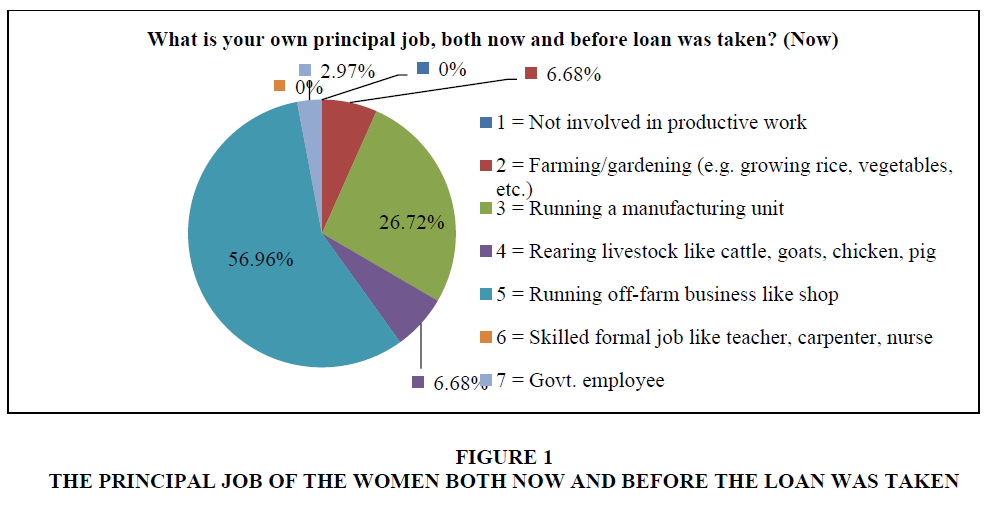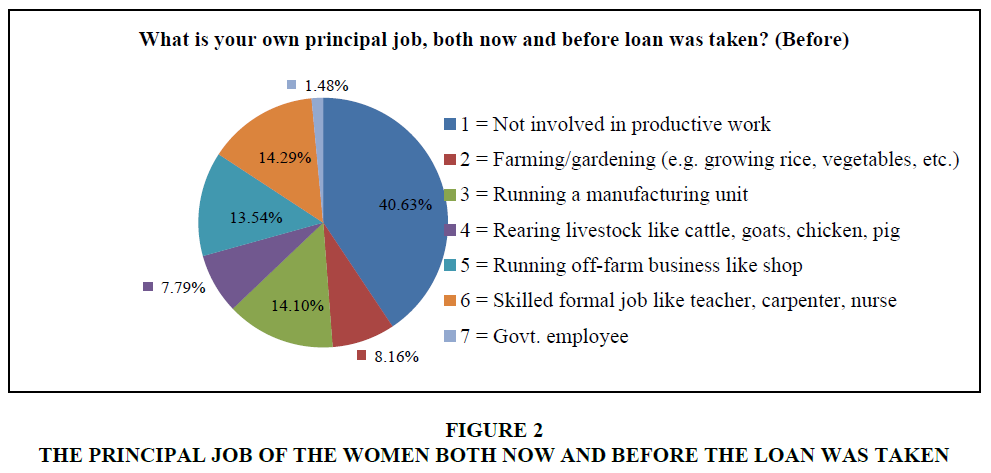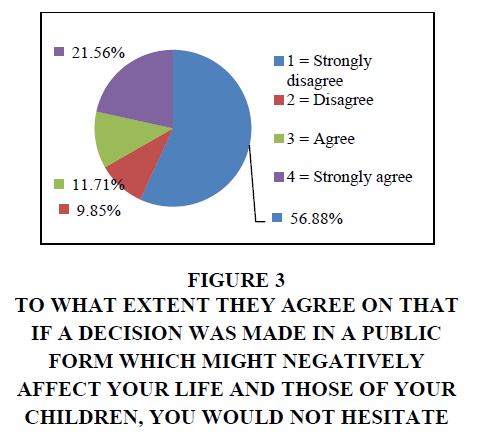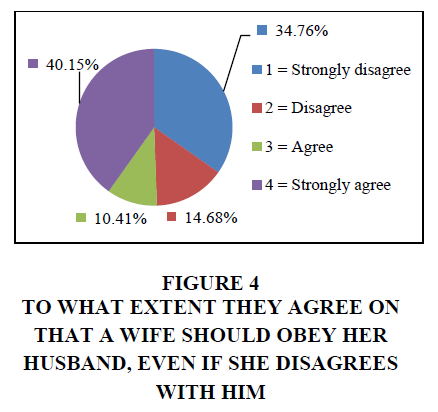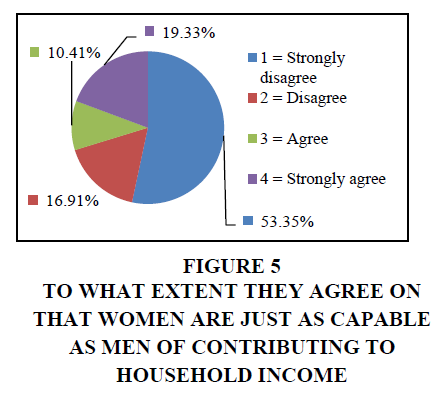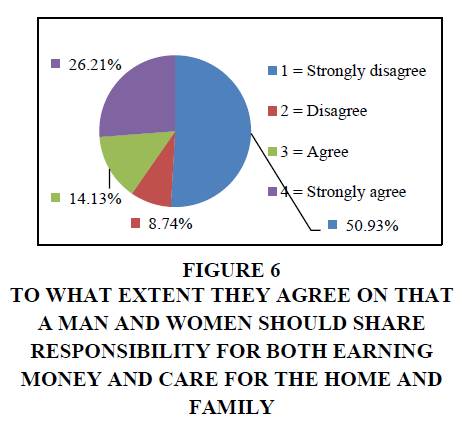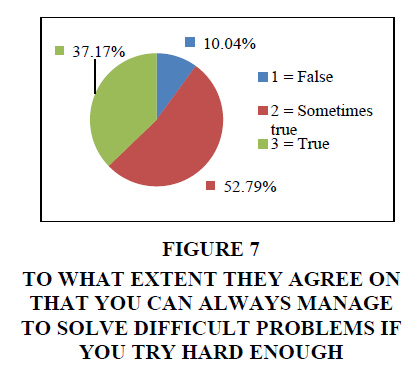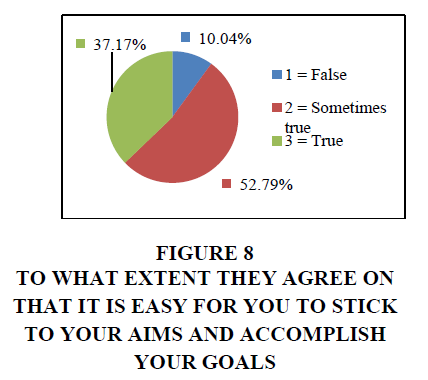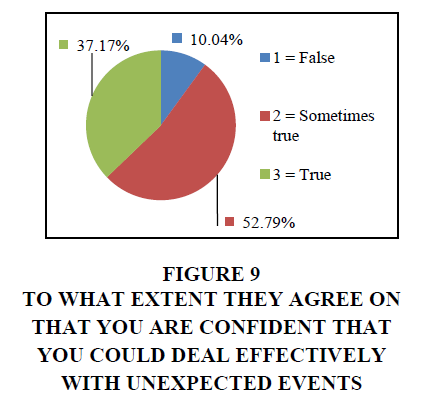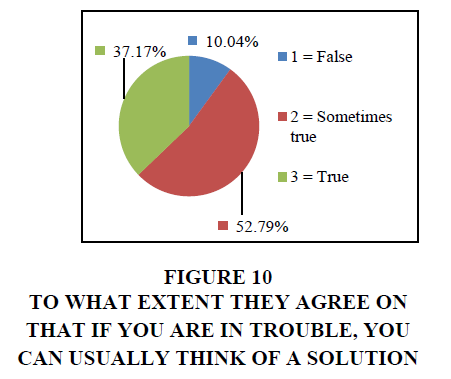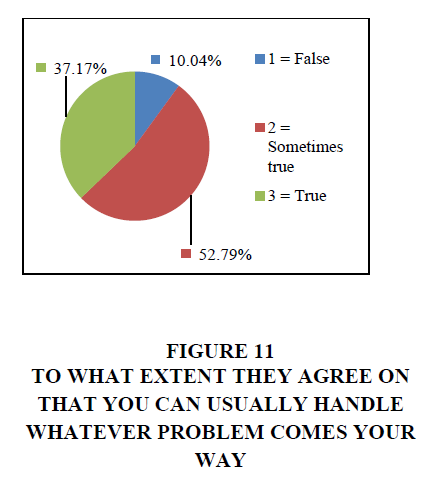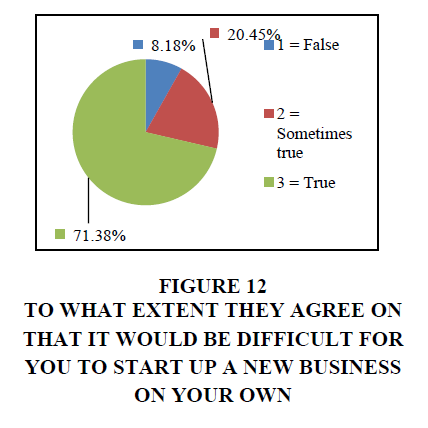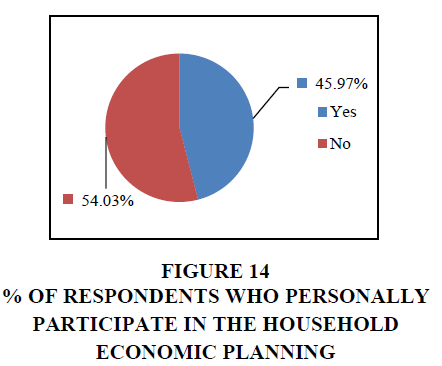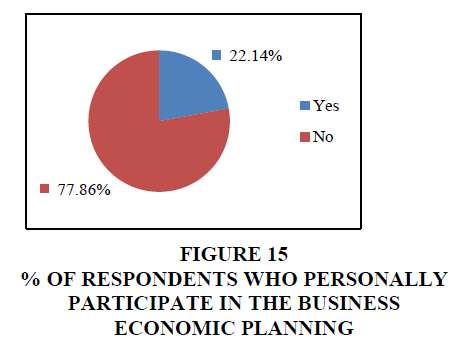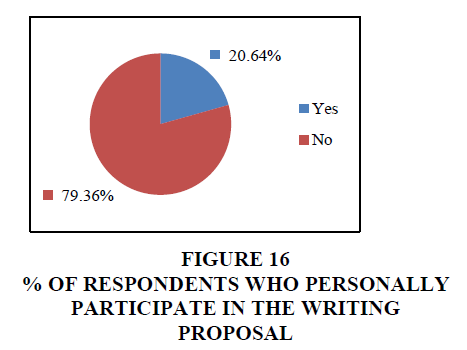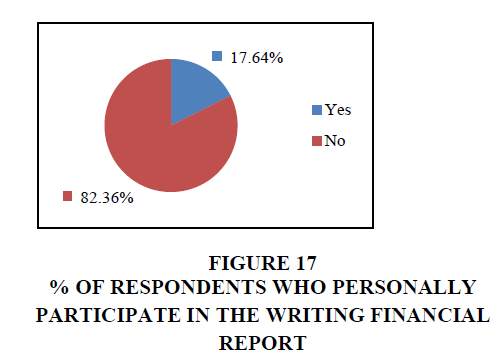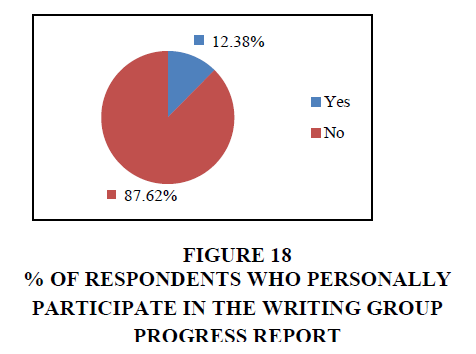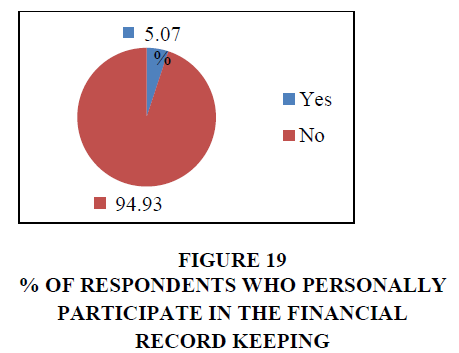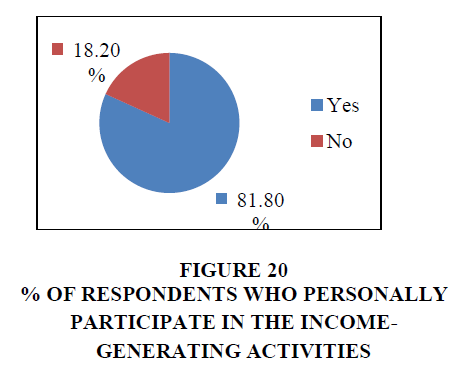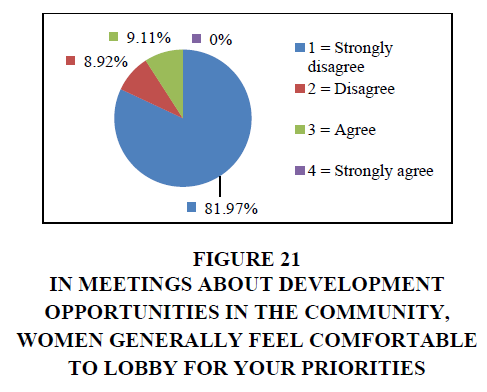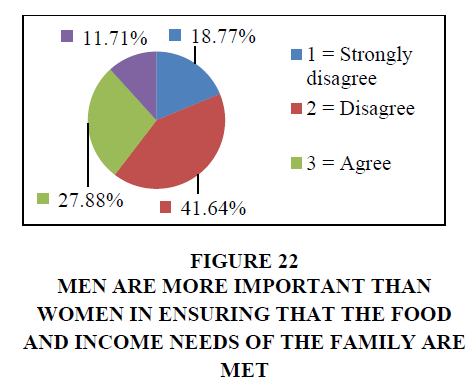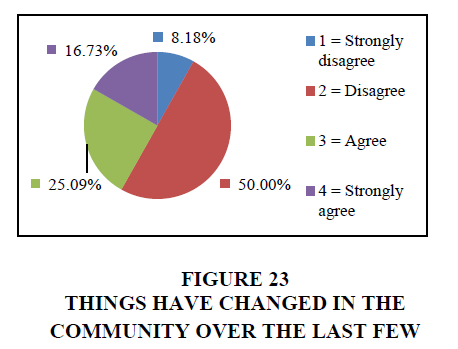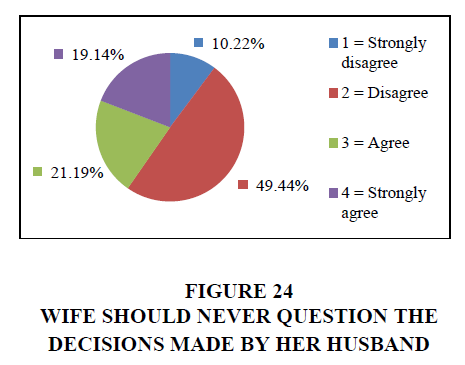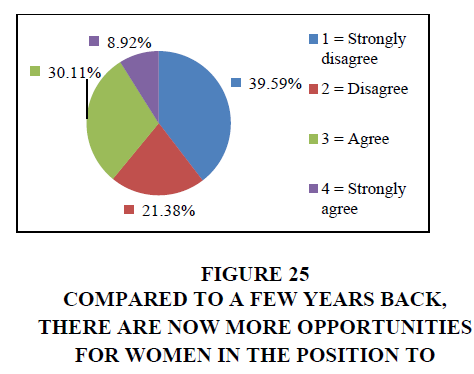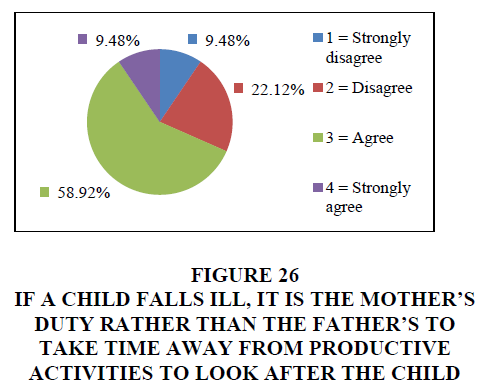Research Article: 2021 Vol: 25 Issue: 6
Women Empowerment and Entrepreneurship Support Leading Towards Improved Marketing Communication: An Analysis of Indian Women
Silky Vigg Kushwah, New Delhi Institute of Management
Teena Singh, New Delhi Institute of Management
Citation Information: Kushwah, S.V. & Singh, T. (2021). Women empowerment and entrepreneurship support leading towards improved marketing communication: an analysis of Indian women. Academy of Marketing Studies Journal, 25(6), 1-11.
Abstract
This paper examines the empowerment of women entrepreneurs who have availed loans under the Stand-up India loan scheme for their businesses. It investigates whether there are any substantial improvement in the empowerment of these women entrepreneurs after the loan is available and business is started. A survey is conducted, and questionnaires are administered among Indian women entrepreneurs who have availed Standup India Loan in the three hilly states, namely Uttrakhand, Himachal Pradesh and Sikkim of India. The total sample size is 600 Indian woman entrepreneurs who have availed Standup India Loan Scheme for their business. So, after data cleaning, 539 questionnaires are valid and usable. The results highlight a significant difference in women's empowerment after the loan is availed, but still, women don't feel confident in making all the decisions. There is still a scope for them to be empowered in a holistic way, namely socially, politically and economically empowered to make their own decision. Studying the status of women entrepreneurs' empowerment after the loan is availed will help the government and other regulators understand whether such financial support schemes are helping Indian women become self-reliant and empowered.
Keywords
Marketing, Entrepreneurship.
Introduction
Women occupy half the world's population and should have equal opportunities to develop themselves individually or as a community. Women's empowerment equips and allows women to make life-determining choices through the different societal problems. It is a process to redefine gender roles that allow women to acquire the ability to choose between the known alternatives that have otherwise been restricted from such an ability. Women empowerment as a concept was introduced at the UN's 3rd world conference in 1985, and it was defined as the distribution of social and economic powers and control of resources in favour of women. Thus it is an international agenda, and the UN has significantly projected discrimination against women as a problem of universal alarm.
Women empowerment is defined as the powerfulness of women to know their rights and make decisions that benefit their livelihood. Women need more access and control of resources, which constitute empowerment and capabilities, leading them to improve their livelihood. Women empowerment can also be explained as a change in women's lives, which increases their capabilities to lead a fulfilling human life. India took various measures from time to time to support women empowerment. The National Commission for women was established by parliament in 1990 to safeguard women's rights and legal entitlements.
The government of India declared 2001 as the Year of women's empowerment (Swashakti). The national policy for the empowerment of women was passed in 2001. The objective of this policy was the de jure and de facto enjoyment of all human rights and fundamental freedom by women on an equal basis with men in all spheres – political, economic, social, cultural and civil. Women empowerment is also achieved by making women self-reliant, especially financially, by introducing various government-funded schemes. The current paper focuses on the Stand Up India loan scheme, which the government implemented. The current paper highlights the analysis of such special incentives and drive created by the government of India to bolster the growth and empowerment of women entrepreneurs.
Women Empowerment Improving Marketing Communication
Women empowerment is also important from the perspective of marketers, and it is gaining enough popularity in marketers' eyes. Nowadays, companies have women as the main lead of their advertisements and promotion because gender acceptability is increasing among the masses. Women are the faces of success and hard work in society, and marketers are acknowledging this fact. Traditional marketing is no more in fashion, and in modern marketing, women have earned their space. Overall, marketing communication has been improved with women empowerment in the picture. In this article, the authors are talking about women's empowerment and entrepreneurship. Indian marketers are also changing; they are casting women as the central theme or main hero in their advertisement or brand promotion because society is ready to accept them. The role of women in marketing communication can't be denied, and the last era has had the success of women. Women are climbing the ladder of success in all the fields, sports, films, education, administration, etc. The overall perspective of Indian people and the population around the world has changed towards women. In India, parents are happy to create more opportunities for their daughters. Women are seeing as achievers, and they are accepted in the top leadership roles also. Marketers are also aligning their brand success with the empowerment of women. In all types of the promotional mix, the women are taking the front seat. Recently, in a chocolate advertisement, the woman was the main hero. Women empowerment in all the fields is increasing the brand value and marketing value of women too.
Review of Literature
This literature review explores different terminologies used to define women's empowerment and facilitates a multidimensional and relational understanding of women's empowerment through entrepreneurship and resilience. Empowerment is defined as the process through which individuals acquire social, economic and political power to liberate themselves from the injustices of society (Wallerstein, 1992). Thus, the concept of empowerment flows from power. Kabeer (1999) defines empowerment as the process by which those who have been denied the ability to make strategic life choices acquire such ability.
The term empowerment has been popular as it identifies various key elements that include decision-making power, assertiveness, ability to make choices, education, skill acquisition, and increased self-image. Thus it benefits individuals and groups (Chamberlin, 1997). Increasingly empowerment is gaining momentum in society and is understood as change (Cornell empowerment group, 2007). The most important benefit of empowerment lies in accelerating the pace of social change and economic growth. Empowering women entails creating an enabling environment where women can implement government programs and organizational policies that affect their lives (Chattopadhyay, 2005; Aspy and Sandhu (1999); Patricia et al., 2003).
According to Chattopadhyaya(2005), women empowerment can be defined as the situation where women moved from being oppressed to the state where both the oppressor and the oppressed are socially, politically, and economically equal. Women's economic empowerment refers to the process where women become self-reliant to generate income, become the breadwinners for themselves and their families, and help fight poverty (Elliot 2008). Political empowerment refers to advancing women's political interest and playing a central role in the upliftment of society (Pam Rajput, 2001: Tiwari, 2001).
This literature critically reviews the empowerment of women through entrepreneurship. Entrepreneurship is defined as the ability and readiness to develop, organize, and run a business enterprise, along with any of its uncertainties, to make a profit. Many researchers provide a different definition of entrepreneurs in the literature. Entrepreneurs are the risk-takers who directly decide to solve urgent problems (Pickle and Abrahamson, 1990). According to Advani (2013), entrepreneurs start their business from scratch to make a profit. While women have to go through the same stages of setting up an enterprise as do men and have to face similar challenges, irrespective of gender, women have a distinct set of factors that obstruct their entry as entrepreneurs and later their survival as successful businesswomen.
Women empowerment through entrepreneurship is an important tool for socio-economic development. When society recognizes women as one among the social partners, facilitates equal education and health, and allows them to participate equally and effectively, the nation will be on the spurt of economic development (Nath et al., 2006). Thus supporting women in becoming empowered and generate income through self-employment or entrepreneurship is an important tool of empowerment (Anita Chaudhary, 2012).
Women entrepreneurs run the world over 1/3rd of entrepreneurial ventures. Thus economic empowerment of women is a vital element for strong economic growth, and entrepreneurship happens to be the best way. Involvement of women in entrepreneurial activities would ensure effective utilization of labour, generation of income and hence improvement in quality of life.
Jameela (2003), in her study, examine the effectiveness of various policies and schemes implemented by the government in empowering women. Her study points out that the microcredit approach was successful for alleviating poverty and empowering women. The current paper highlights the analysis of special schemes and drives created by the government of India to bolster the growth of women entrepreneurs. It analysis the current status of empowerment of those women who availed loan under the Standup India loan scheme and started their own business.
Research Design and Methods
The current paper tries to measure overall women empowerment after acquiring loans under the Standup India Loan Scheme. It also tries to compare the level of women empowerment before and after the Stand-up India loan was taken. The study is conclusive as it tries to analyze and investigate the impact of one of the famous government schemes, the Standup India Loan Scheme for women, on women's empowerment in all spheres, socially, economically and politically. The study is conducted in the hilly states of India, namely Uttrakhand, Himachal Pradesh and Sikkim, during the period 2019 to 2021.
The sampling technique used will be judgmental (under non-probability sampling technique) as the justification for selecting hill states as sample areas is that these states have seen slow development in the past years due to their geographical constraints like remoteness, challenging and less infrastructure and communication development, migration of the young population for their livelihood etc.
A survey is conducted, and questionnaires are administered among Indian women entrepreneurs who have availed Standup India Loan in the hilly states. A self-made questionnaire is designed to measure the degree of women empowerment, keeping the standardized questionnaire on Women Empowerment Index founded by The Hunger Project Organization, headquarters in New York as the base model. The questionnaire is administered among Indian women entrepreneurs in the selected hill state.
The questionnaire is in two languages- English and Hindi. The individual respondent took an average of 25 minutes to fill the questionnaire. It starts with demographic information about the woman entrepreneur. The total sample size is 600 Indian woman entrepreneurs who have availed Standup India Loan Scheme for their business. So, after data cleaning, 539 questionnaires are valid and usable. The responses are collected from the respondents through both faces to face meetings and telephonic interviews. Frequencies and pie charts are made to show the analysis.
Results and Discussion
This part deals with analyzing women empowerment in the hilly states of India. In this research study, we consider many variables that can help us analyze women empowerment from all three dimensions, social, economic and political empowerment. The results are discussed as below.
Figures 1 and 2 show the analysis of the productive activities women and their household members have engaged in during the past 12 months and before the loan were taken. It shows that the percentage (%) of the women running off-farm business before the loan was taken is 13.54, but now the percentage is increased to 56.96. 14.10 of the women ran the manufacturing unit before the loan was taken, but now that percentage is increased to 26.72. Moreover, 1.48 women were involved in government jobs, but now the percentage is increased to 2.97. The analysis also highlights that 40.63% of the women were not involved in any productive work before the loan was taken, but now it is nil. It also shows that the % of women who were into skilled formal job was 14.29, but now it is nil Figures 3 & 4.
Social Empowerment
Before the loan was taken, the percentage of women involved in farming/gardening was 8.16, but now the percentage of women involved in farming is only 6.68. It shows that the percentage of women rearing livestock before was 7.79, but now it is decreased to 6.68. These results reflect the effectiveness of the Stand-up India loan scheme on the Himachal Pradesh, Sikkim and Uttarakhand women's productive activities, who opted for this loan scheme. It also shows that the % of women who were into skilled formal job were 14.29, but now it is nil Figures 3-12.
The pie charts above highlight the analysis of the community-related empowerment of women. Only 21.56% of the women strongly agree that if a decision is to be made in a public form which might negatively affect her life and those of her children, she will not hesitate to stand up and protest", however, 56.88% of the women strongly disagree with it. 40.15% of the women strongly believe that a wife should obey the husband if she disagrees with him, and 14.68% strongly disagree. Hardly 10.41% of the women agree that women are just as capable as men in contributing to household income, and 53.35% strongly disagree with it. Only 14.13% of women believe that men and women should earn money and care for the home and family. However, 50.93% of women strongly disagree with it. Hardly 11.15% of the women feel that they do not mind speaking in front of many people, even if the traditional leader is around, and 55.58% of the women strongly disagree.
The Self-Confidence of Women Entrepreneur
The pie charts below highlight the analysis of self-confidence among women entrepreneurs. It reflects that 37.17% of women can always solve difficult problems; however, 10.04% cannot solve difficult problems. 37.17% of the women consider it is easy for them to stick to their aims and accomplish their goals and only 10.04% of the women consider it is not. It is also observed that 37.17% of the women are confident that they could deal effectively with unexpected events, and only 10.04% could not deal with unexpected events. It shows that 37.17% of the women can usually think of a solution when in trouble; however, 10.04% cannot think of a solution. It is observed that 37.17% of the women can usually handle whatever problem comes in their way, whereas 10.04% of the women cannot handle whatever problem comes in their way. It shows that 71.38% of the women find it challenging to start a new business independently, and only 8.18% of women find it not difficult to start up a new business on their own.
Economic Empowerment of Women
The Figures 13-16 shows the analysis of how women's personally participate in managing savings or loans. It shows that 45.97% have personally taken part in managing the savings or loans, whereas the rest have not personally taken part in them. Figure 14 reflects the analysis of the women who personally participate in household economic planning. The results focus that 45.97% of the women have personally taken part in household economic planning, and 54.03% have not personally taken part in household economic planning.
Figure 3 To what Extent they Agree on that if a Decision was made in a Public form which might Negatively affect your life and those of your Children, you would not Hesitate to stand up and Protest.
Figure 4 To what Extent they Agree on that a Wife Should obey her Husband, Even if she Disagrees with him
Figure 5 To what Extent they Agree on that Women are just as Capable as men of Contributing to Household Income
Figure 6 To what Extent they Agree on that a man and Women Should Share Responsibility for both Earning Money and Care for the Home and Family
Figure 7 To what Extent they Agree on that you Can Always Manage to Solve Difficult Problems if you try Hard Enough
Figure 8 To what Extent they Agree on that it is Easy for you to Stick to your Aims and Accomplish Your Goals
Figure 9 To what Extent they Agree on that you are Confident that you Could Deal Effectively with Unexpected Events
Figure 10 To what Extent they Agree on that if you are in Trouble, you can Usually think of a Solution
Figure 12 To what Extent they Agree on that it would be difficult for you to Start Up a New Business on your Own
The women personally participating in business economic planning. It reflects that only 22.14% of the women have personally taken part in business economic planning, and 77.86% have not. Figure 16 shows the analysis of women personally participating in writing the proposal. It shows that hardly 20.64% of the women have taken part in writing the proposal, and the rest, 79.36% of the total women, have not personally taken part in writing a proposal.
Figures 17-26 highlights the analysis of women's personally participating in writing a financial report. The results show that only 17.64% of the women have personally taken part in writing a financial report, whereas 82.36% have not personally written a financial report. Figure 18 shows the analysis of women personally participating in writing group progress report. It shows that only 12.38% of the women have personally taken part in writing group progress reports, and 87.62% have not done it.
Figure 21 In Meetings about Development Opportunities in the Community, Women Generally Feel Comfortable to Lobby for your Priorities
Figure 22 Men are More Important than Women in Ensuring that the Food and Income Needs of the Family are Met
Figure 25 Compared to a Few Years Back, there are now more Opportunities for Women in the Position to Become Influential Actors in how the Community Is Governed
Figure 26 If a Child Falls ILL, it is the Mother?s Duty Rather than the Father?s to Take Time Away from Productive Activities to Look After the Child
Political Empowerment of Women
Figure 19 shows the analysis of women's personally participating in financial report keeping. It is observed that hardly 5.07% have personally taken part in financial report keeping, and 94.93% have not. Figure 20 reflects that 81.80% of the women have personally taken part in income-generating activities, and only 18.20% have not done it. The pie charts above highlight the analysis of the political empowerment of women. It shows that hardly 9.11% of the women agree that they are comfortable lobby for their priorities in the meetings about development opportunities in their community, and 81.97% of the women strongly disagree with it. It is also observed that 27.88% of women agree that men are more important than women in ensuring the food and income needs of the family, whereas 41.64% of the women disagree with the statement. Only 16.73% of the women feel comfortable speaking openly and truthfully in public forums, whereas 50% disagree with this idea. The result also reflects that 19.14% of the women believe that a wife should never question the decisions made by her husband, and 49.44% of the women strongly disagree with the statement. However, 30.11% of women feel that women are now more opportunities to become influential actors, whereas 39.59% of women strongly disagree with it. It is also highlighted that 58.92% of the total women believe that if a child falls ill, it is the mother's duty rather than the father's to take time away from productive activities to look after the child, for instance: go to the office for work, gardening, etc. Only 9.48% of women strongly disagree with the statement.
Conclusion
A change is observed in women after they became entrepreneurs after they availed loans. It is observed that now women entrepreneurs can borrow money from banks and government programmes as well. It is also observed that most women entrepreneurs still lack self-confidence. However, half of them feel that they can stick to their aim and accomplish it. It is highlighted that women have not taken an active part in any economic activities except in income-generating activities and entrepreneurship. Moreover, women are not confident in performing the activities efficiently before the loan was available and currently. It can be concluded that although the government's support by introsucing such funded schemes helps women, the road to holistic women empowerment is still far ahead. Along with such schemes, the government may also introduce educational programmes of all the people on women empowerment at the grassroots level.
References
- Advani, S. (2013). Back to Basics: Businessman vs Entrepreneur. Allen, S. and Truman, C. (1993). Women in Business: Perspectives on Women Entrepreneurs. Routledge: London. annual global entrepreneurship symposium.
- Aspy, C. B., & Sandhu, D. S. (1999). Empowering women for equity: A counseling approach. American Counseling Association, Alexandria, VA. 22304
- Chamberlin, J., & Schene, A. H. (1997). A working definition of empowerment. Psychiatric Rehabilitation Journal, 20, 43-46.
- Chattopadhyay, A. (2005). Women and entrepreneurship. Yojana, a Monthly Journal of Ministry of Information and Broadcasting, 5(1), New Delhi.
- Cornwall, A., & Anyidoho, N. A. (2010). Introduction: Women's empowerment: Contentions and contestations. Development, 53(2), 144-149.
- Elliott, C. M. (2008). Global empowerment of women: Responses to globalization and politicized religions. Routledge, New York.
- Kabeer, N. (1999 a) : Resources, agency, achievements : Reflections on the measurement of women's empowerment : Development and change : 30 : 435 – 464.
- Nath, V. (2006). Empowerment of women through ICT-enabled networks. Cinderella or Cyberella, 191-206.
- Patricia S.E. Darlington & Mulvaney, B. M. (2003). Women, power, and ethnicity – Working toward reciprocal empowerment. The Haworth Press, New York, London, Oxford.
- PICKLE, H. B. (1990). a Royce L Abrahamson. Small business management.
- Rajput, P. (2001). Women's political participation in India: An agenda for empowerment. Empowering the Indian Women, New Delhi, Ministry of Information and Broadcasting, Government of India, 2.
- Somasundaram, M. T. A Literature Review On Women Empowerment Through Entrepreneurship.
- Tiwari, R.S. (2001). Feminism and globalization versus Indian women empowerment. In Abha Avasti and A.K. Srivastava (eds.), Modernity, Feminism and Women's Empowerment, Rawat Publication, New Delhi.
- Wallerstein N. Powerlessness, empowerment and health: Implication for Health promotion programs. American Journal of Health Promotion. 1992; 6(3):197-205.
